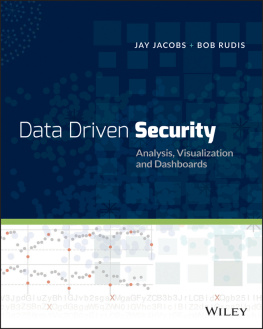Collins - Network security through data analysis: from data to action
Here you can read online Collins - Network security through data analysis: from data to action full text of the book (entire story) in english for free. Download pdf and epub, get meaning, cover and reviews about this ebook. City: Beijing;Boston;Farnham;Sebastopol;Tokyo, year: 2017;2014, publisher: OReilly Media, Inc., genre: Computer. Description of the work, (preface) as well as reviews are available. Best literature library LitArk.com created for fans of good reading and offers a wide selection of genres:
Romance novel
Science fiction
Adventure
Detective
Science
History
Home and family
Prose
Art
Politics
Computer
Non-fiction
Religion
Business
Children
Humor
Choose a favorite category and find really read worthwhile books. Enjoy immersion in the world of imagination, feel the emotions of the characters or learn something new for yourself, make an fascinating discovery.
Network security through data analysis: from data to action: summary, description and annotation
We offer to read an annotation, description, summary or preface (depends on what the author of the book "Network security through data analysis: from data to action" wrote himself). If you haven't found the necessary information about the book — write in the comments, we will try to find it.
Network security through data analysis: from data to action — read online for free the complete book (whole text) full work
Below is the text of the book, divided by pages. System saving the place of the last page read, allows you to conveniently read the book "Network security through data analysis: from data to action" online for free, without having to search again every time where you left off. Put a bookmark, and you can go to the page where you finished reading at any time.
Font size:
Interval:
Bookmark:
This book is about networks: monitoring them, studying them, andusing the results of those studies to improve them. Improve in thiscontext hopefully means to make more secure, but I dont believe we have thevocabulary or knowledge to say that confidentlyat least not yet. Inorder to implement security, we try to achievesomething more quantifiable and describable: situational awareness .
Situational awareness, a term largely used in military circles, isexactly what it says on the tin: an understanding of the environmentyoure operating in. For our purposes, situational awarenessencompasses understanding the components that make up your network and howthose components are used. This awareness is often radically different from how the network is configured and how the network wasoriginally designed.
To understand the importance of situational awareness in informationsecurity, I want you to think about your home, and I want you to countthe number of web servers in your house. Did you include your wirelessrouter? Your cable modem? Your printer? Did you consider the webinterface to CUPS? How about your television set?
To many IT managers, several of the devices listed didnt evenregister as web servers. However, embedded web servers speak HTTP,they have known vulnerabilities, and they are increasingly common asspecialized control protocols are replaced with a web interface.Attackers will often hit embedded systems without realizing what theyarethe SCADA system is a Windows server with a couple of funnyadditional directories, and the MRI machine is a perfectly serviceablespambot.
This book is about collecting data and looking at networks in order tounderstand how the network is used. The focus is on analysis, which is theprocess of taking security data and using it to make actionable decisions. I emphasize the word actionable here because effectively, securitydecisions are restrictions on behavior. Security policyinvolves telling people what they shouldnt do (or, more onerously,telling people what they must do). Dont use Dropbox to hold companydata, log on using a password and an RSA dongle, and dont copy the entireproject server and sell it to the competition. When we make securitydecisions, we interfere with how people work, and wed better have good, solid reasons for doing so.
All security systems ultimately depend on users recognizing theimportance of security and accepting it as a necessary evil. Security rests on people: it rests on the individual users of asystem obeying the rules, and it rests on analysts and monitorsidentifying when rules are broken. Security is only marginally atechnical probleminformation security involves endlessly creativepeople figuring out new ways to abuse technology, and against thisconstantly changing threat profile, you need cooperation from bothyour defenders and your users. Bad security policy will result inusers increasingly evading detection in order to get their jobs done orjust to blow off steam, and that adds additional work for yourdefenders.
The emphasis on actionability and the goal of achieving security iswhat differentiates this book from a more general text on datascience. The section on analysis proper covers statisticaland data analysis techniques borrowed from multiple other disciplines,but the overall focus is on understanding the structure of a networkand the decisions that can be made to protect it. To that end, I have abridged the theory as much as possible, and have also focused onmechanisms for identifying abusive behavior. Security analysis hasthe unique problem that the targets of observation are not only awaretheyre being watched, but are actively interested in stopping it if atall possible.
Several years ago, I talked with an analyst who focused primarily on auniversity hospital. He informed me that the most commonly occupiedmachine on his network was the MRI. In retrospect, this is easy to understand.
Think about it, he told me. Its medical hardware, which means itscertified to use a specific version of Windows. So every week,somebody hits it with an exploit, roots it, and installs a bot on it.Spam usually starts around Wednesday. When I asked why he didntjust block the machine from the Internet, he shrugged and told me thedoctors wanted their scans. He was the first analyst Ive encounteredwith this problem, and he wasnt the last.
We see this problem a lot in any organization with strong hierarchical figures:doctors, senior partners, generals. You can build as many protectionsas you want, but if the general wants to borrow the laptop over theweekend and let his granddaughter play Neopets, youve got an infectedlaptop to fix on Monday.
Just to pull a point I have hidden in there, Ill elaborate. I am a firm believerthat the most effective way to defend networks is to secure and defend only what you need to secure and defend. I believe this is the casebecause information security will always require people to be involved inmonitoring and investigationthe attacks change too much, and whenwe do automate defenses, we find out that attackers can now use themto attack us.[]
I am, as a security analyst, firmly convinced that security should beinconvenient, well-defined, and constrained. Security should be anartificial behavior extended to assets that must be protected. Itshould be an artificial behavior because the final line of defense inany secure system is the people in the systemand people who arefully engaged in security will be mistrustful, paranoid, and lookingfor suspicious behavior. This is not a happy way to live your life, so in order to make life bearable, we have to limit security to what must beprotected. By trying to watch everything, you lose the edge thathelps you protect whats really important.
Because security is inconvenient, effective security analysts mustbe able to convince people that they need to change their normaloperations, jump through hoops, and otherwise constrain their missionin order to prevent an abstract future attack from happening. To thatend, the analysts must be able to identify the decision, produceinformation to back it up, and demonstrate the risk to their audience.
The process of data analysis, as described in this book, is focused ondeveloping security knowledge in order to make effective securitydecisions. These decisions can be forensic: reconstructing eventsafter the fact in order to determine why an attack happened, how itsucceeded, or what damage was done. These decisions can also beproactive: developing rate limiters, intrusion detection systems, orpolicies that can limit the impact of an attacker on a network.
Information security analysis is a young discipline and there reallyis no well-defined body of knowledge I can point to and say Knowthis. This book is intended to provide a snapshot of analytictechniques that I or other people have thrown at the wall over thepast 10 years and seen stick.
The target audience for this book is network administrators andoperational security analysts, the personnel who work on NOC floors orwho face an IDS console on a regular basis. My expectation is thatyou have some familiarity with TCP/IP tools such as netstat , and some basic statistical and mathematicalskills.
In addition, I expect that you have some familiaritywith scripting languages. In this book, I use Python as my go-tolanguage for combining tools. The Python code is illustrative andmight be understandable without a Python background, but it is assumedthat you possess the skills to create filters or other tools inthe language of your choice.
Font size:
Interval:
Bookmark:
Similar books «Network security through data analysis: from data to action»
Look at similar books to Network security through data analysis: from data to action. We have selected literature similar in name and meaning in the hope of providing readers with more options to find new, interesting, not yet read works.
Discussion, reviews of the book Network security through data analysis: from data to action and just readers' own opinions. Leave your comments, write what you think about the work, its meaning or the main characters. Specify what exactly you liked and what you didn't like, and why you think so.








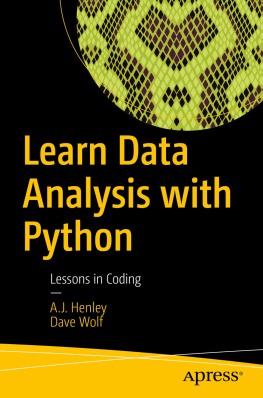
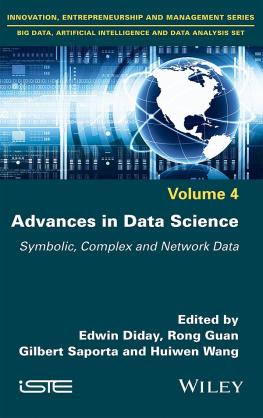
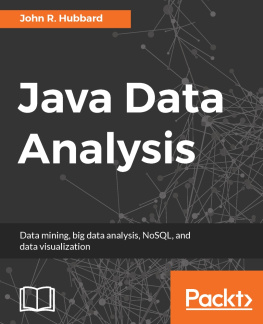
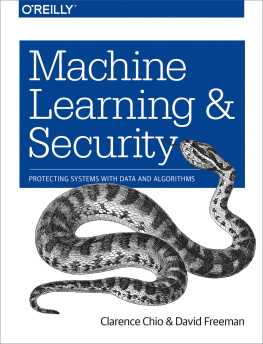
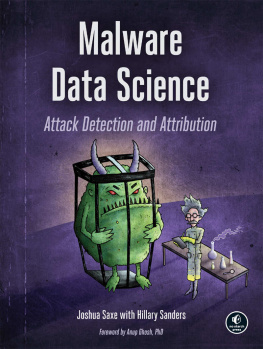
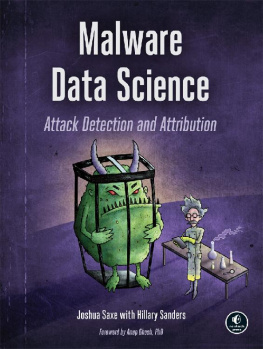
![Dmitry Zinoviev [Dmitry Zinoviev] - Data Science Essentials in Python](/uploads/posts/book/119602/thumbs/dmitry-zinoviev-dmitry-zinoviev-data-science.jpg)

